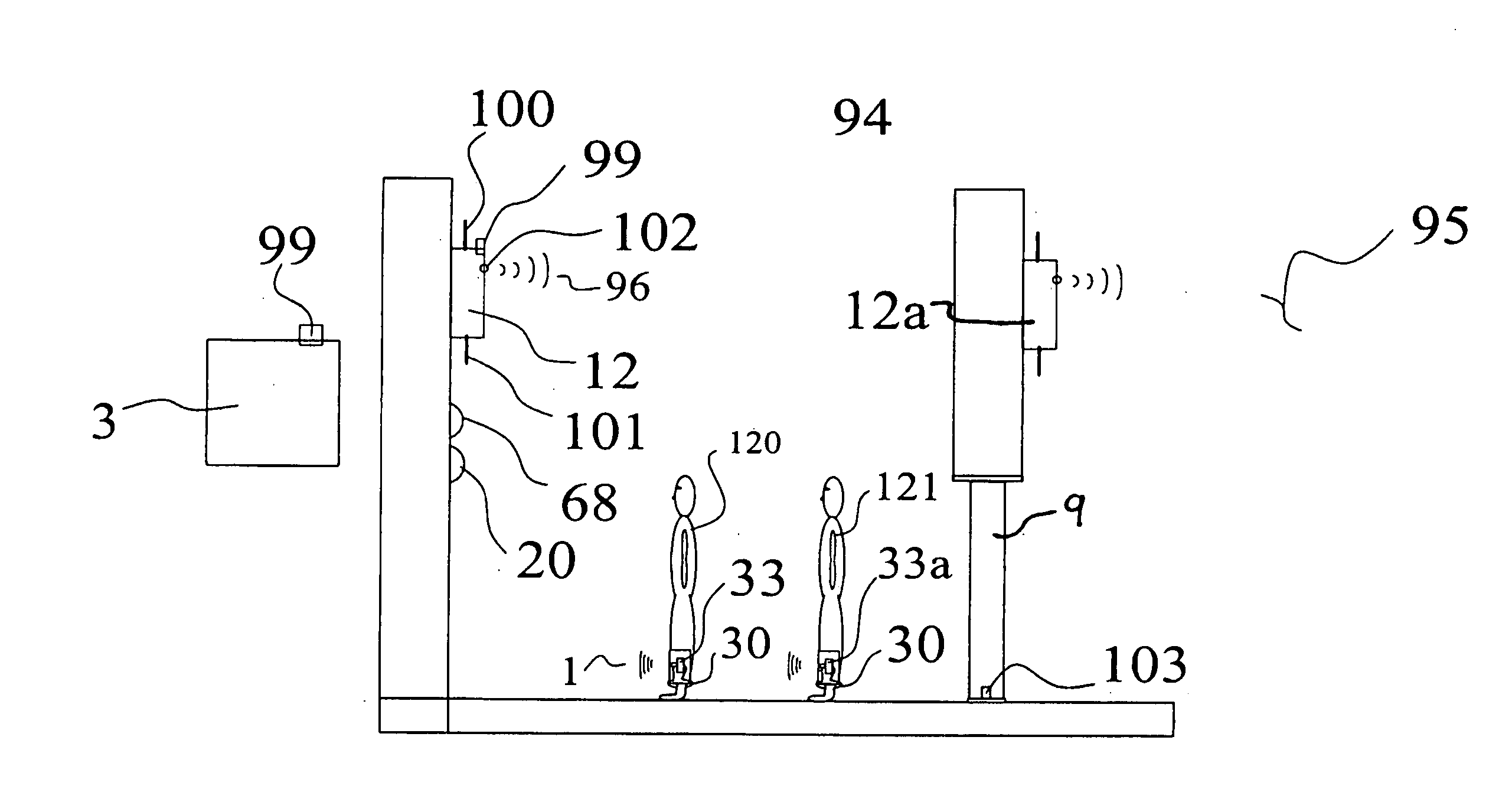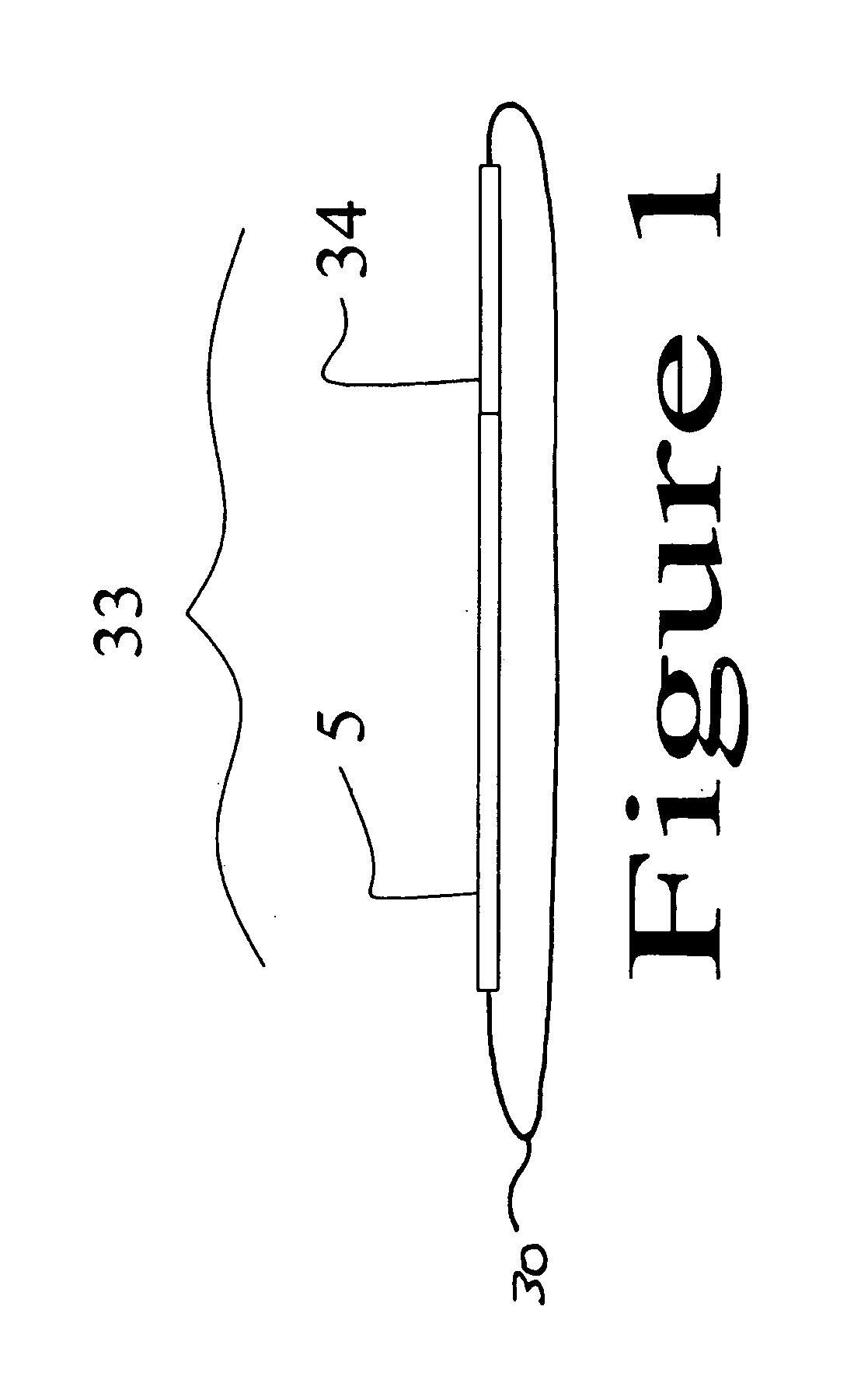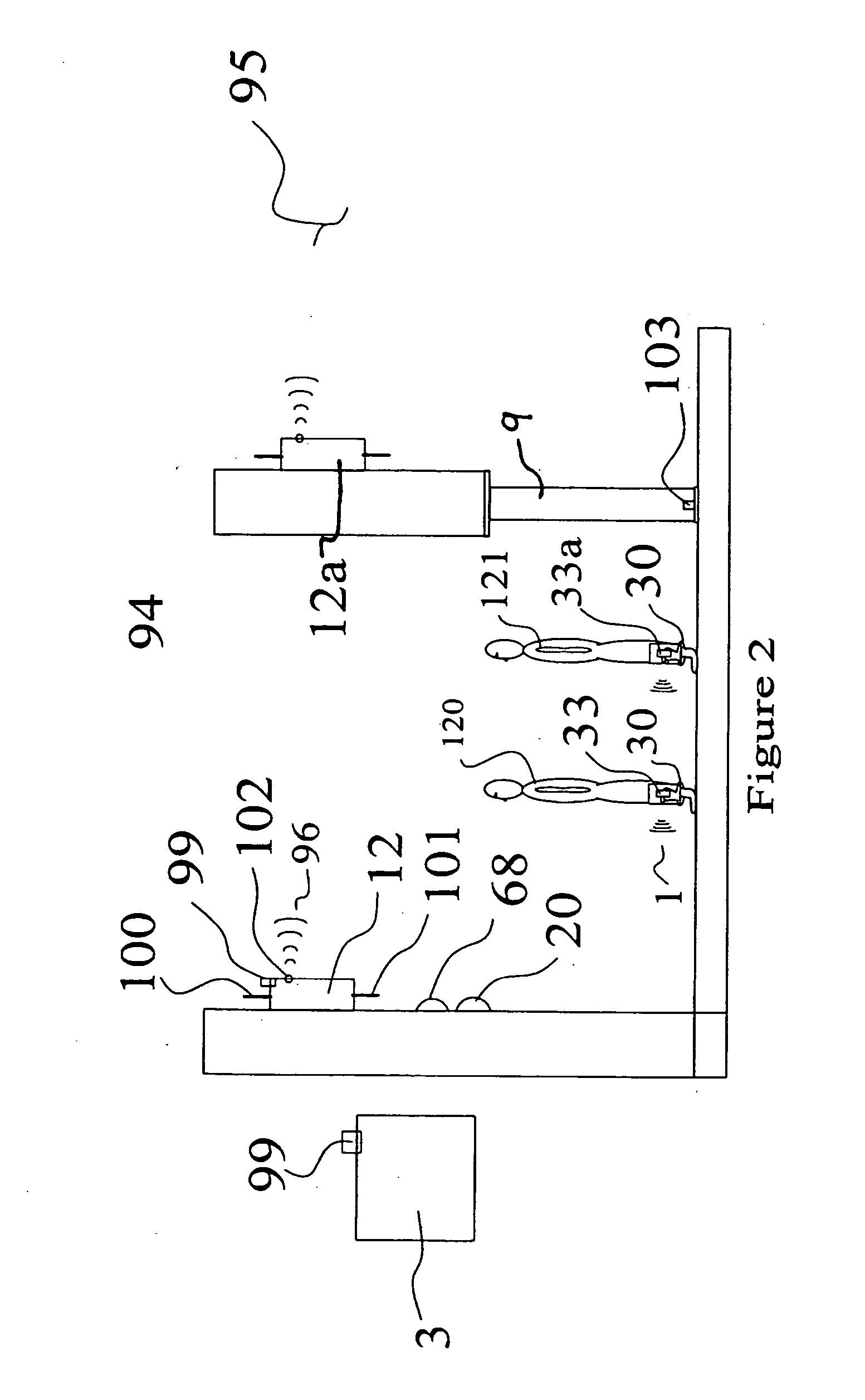Computer interface system for tracking of radio frequency identification tags
a computer interface and radio frequency identification technology, applied in the field of computer interface systems for tracking of radio frequency identification tags, can solve the problems of inability of the prior art to apply the tracking technology to changing areas, inability to provide a tracking method where powered transceivers are impractical, etc., to facilitate the use of a phone system and facilitate the selection of phone conversations
- Summary
- Abstract
- Description
- Claims
- Application Information
AI Technical Summary
Problems solved by technology
Method used
Image
Examples
Embodiment Construction
[0053] As can best be seen by reference to FIG. 1, an actual passive device 33 used in the preferred embodiment is nearly flat and less than 1 inch square. The device size allows it to be integrated into almost anything. It consists of a micro transceiver 5 and an antennae 34 of a type known in the prior art since they are not powered, they rely on a pulse from a transmitter on a transceiver 12 to generate power for a response signal.
[0054]FIG. 2 shows a possible transceivers-passive device 33 antenna solutions that tracks appropriately tuned passive devices. The passive devices can be mounted discretely and hidden to the point to where they are almost undetectable. They can, for example, be run in the seams of clothing. In FIG. 2 they are shown as a bracelet around the ankle although a hospital wrist type bracelet would work as well.
[0055] This invention has the following general parameters:
[0056] a) use of passive transmitters to track objects within defined spaces;
[0057] b) m...
PUM
 Login to View More
Login to View More Abstract
Description
Claims
Application Information
 Login to View More
Login to View More - R&D
- Intellectual Property
- Life Sciences
- Materials
- Tech Scout
- Unparalleled Data Quality
- Higher Quality Content
- 60% Fewer Hallucinations
Browse by: Latest US Patents, China's latest patents, Technical Efficacy Thesaurus, Application Domain, Technology Topic, Popular Technical Reports.
© 2025 PatSnap. All rights reserved.Legal|Privacy policy|Modern Slavery Act Transparency Statement|Sitemap|About US| Contact US: help@patsnap.com



